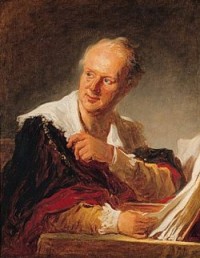 En lien avec l’exposition de peintures, Figures de fantaisie, qui se tiendra au Musée des Augustins de Toulouse, l’Université de Toulouse Jean Jaurès et l’Université d’Exeter sont heureux d’annoncer un appel à communications pour un colloque interdisciplinaire. Associé à l’imagination et non à la raison, la fantaisie au XVIIIe siècle était une sorte de distraction capricieuse hors du quotidien. Pour Voltaire, c’était «un désir singulier, un goût passager», pour Samuel Johnson «quelque chose qui plaît ou divertit sans usage ou sans valeur réelle ». Avec son quasi-synonyme le caprice (capriccio), la fantaisie faisait partie d’un riche réseau sémantique, reliant esprit, plaisir, désir érotique, spontanéité, improvisation, surprise, écart par rapport aux normes, futilité et inconséquence. La fantaisie imprévisible et excentrique a offert de nombreuses possibilités à la créativité artistique.
En lien avec l’exposition de peintures, Figures de fantaisie, qui se tiendra au Musée des Augustins de Toulouse, l’Université de Toulouse Jean Jaurès et l’Université d’Exeter sont heureux d’annoncer un appel à communications pour un colloque interdisciplinaire. Associé à l’imagination et non à la raison, la fantaisie au XVIIIe siècle était une sorte de distraction capricieuse hors du quotidien. Pour Voltaire, c’était «un désir singulier, un goût passager», pour Samuel Johnson «quelque chose qui plaît ou divertit sans usage ou sans valeur réelle ». Avec son quasi-synonyme le caprice (capriccio), la fantaisie faisait partie d’un riche réseau sémantique, reliant esprit, plaisir, désir érotique, spontanéité, improvisation, surprise, écart par rapport aux normes, futilité et inconséquence. La fantaisie imprévisible et excentrique a offert de nombreuses possibilités à la créativité artistique.
On se propose d’explorer la liberté d’expression de la fantaisie (fantaisie, capriccio) dans la culture européenne au cours du XVIIIe siècle — dans la peinture de genre et de paysage, dans l’architecture et la conception des jardins, dans la philosophie et la fiction, dans le théâtre et la musique. Les sujets peuvent inclure, mais ne sont pas limités à :
• Les tensions entre fantaisie/capriccio et raison
• la relation de la fantaisie à l’imagination
• La fantaisie comme un précurseur du gothique et du fantastique
• L’image fantaisiste ou tête de fantaisie
• Le capriccio dans le paysage, la décoration architecturale, la gravure
• La fantaisie en relation avec un espace, un lieu ou un schéma décoratif
• Fantasia dans une composition musicale et au théâtre
• Anecdote, imagination et désir dans la fiction
• Le rôle de l’imagination dans le discours amoureux et de séduction
• La créativité comme déviation des normes et des règles
Le colloque comprendra une visite guidée de l’exposition Figures de fantaisie avec les conservateurs. On se propose de publier les actes de ce colloque. Les participants doivent être prêts à répondre à leurs frais de déplacement et d’hébergement.
Les propositions (250 mots maximum en français ou en anglais) doivent être soumises au professeur Melissa Percival, Université d’Exeter, MHPercival@exeter.ac.uk avant le 31 Mars 2015.
Fancy‒Fantaisie‒Capriccio: Diversions and Distractions in the Eighteenth Century
Toulouse, 3–4 December 2015
Proposals due by 31 March 2015
Keynote speaker: Professor Martin Postle, Deputy Director of Studies, Paul Mellon Centre for British Art
In conjunction with the exhibition of paintings, Fantasy Figures , to be held at the Musée des Augustins, Toulouse, the Université de Toulouse Jean Jaurès and the University of Exeter are pleased to announce a call for papers for an interdisciplinary colloquium.
Associated with the imagination and not reason, fancy ( fantaisie ) in the eighteenth century was a sort of whimsical distraction from the everyday. For Voltaire it was ‘a singular desire, a passing whim’ (‘un désir singulier, un goût passager’), while for Samuel Johnson it was ‘something that pleases or entertains without real use or value’. Together with its near-synonym caprice ( capriccio ), fancy was part of a rich semantic network, connecting wit, pleasure, erotic desire, spontaneity, improvisation, surprise, deviation from norms, the trivial and inconsequential. Unpredictable and quirky, it offered many outlets for artistic creativity.
Papers are invited that investigate the expressive freedom of fancy ( fantaisie, capriccio ) in European culture during the eighteenth century—in figure and landscape painting, architecture and garden design, philosophy and fiction, theatre and music. Topics may include, but are not limited to the following:
• Tensions between fancy/ capriccio and reason
• Fancy’s relationship to the imagination
• Fancy as a precursor of the Gothic and the fantastic
• The fancy picture or tête de fantaisie
• Capriccio in landscape, architectural painting, engraving
• Fancy in conjunction with a space, place or decorative schema
• Fantasia in musical composition or musical theatre
• Anecdote, imagination and desire in fiction
• The role of fancy in the discourse of love and seduction
• Creativity as a deviation from norms and rules
The colloquium will incorporate a guided visit of the fantasy figures exhibition with the curators. It is hoped that a volume of published essays will arise from the event. Participants should be prepared to meet their own travel and accommodation expenses. Refreshments will be provided on the day. Proposals (maximum 250 words in English or French) should be submitted to Professor Melissa Percival, University of Exeter, MHPercival@exeter.ac.uk by the 31 March 2015.

Leave a Reply
You must be logged in to post a comment.